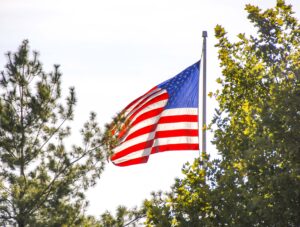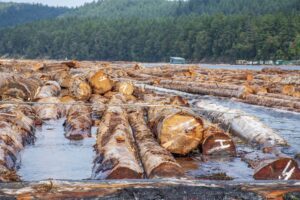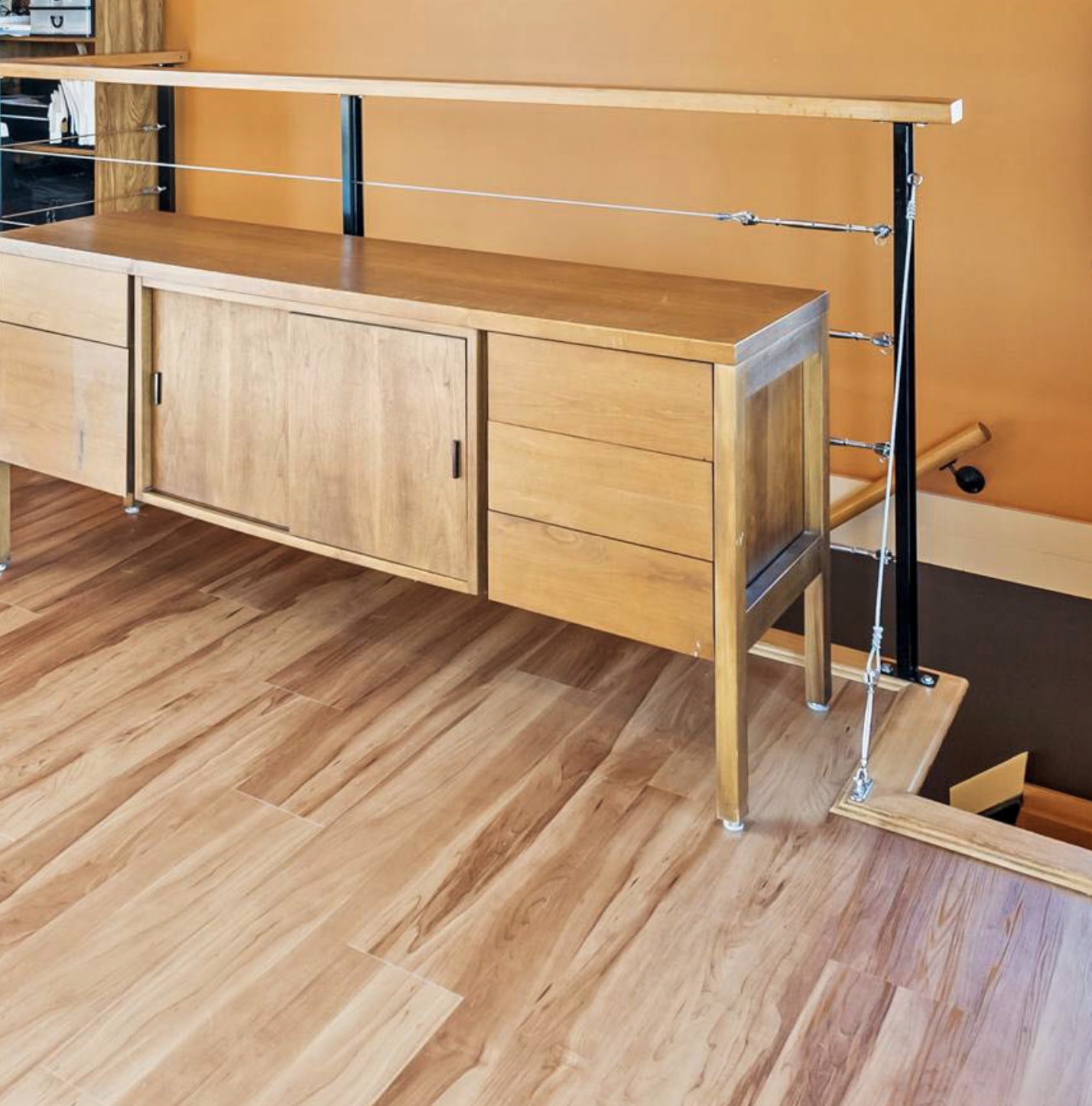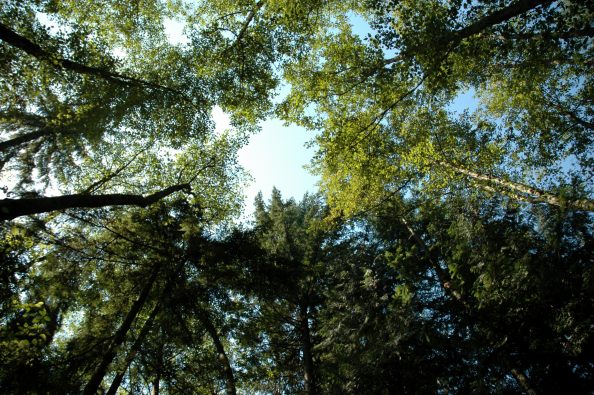 WASHINGTON — Canadians are waking up to a new and uncertain reality after U.S. President Donald Trump’s deadline for economy-wide tariffs passed with no relent overnight, triggering a continental trade war. The president’s executive order hitting Canada and Mexico with 25 per cent across-the-board tariffs, with a lower 10 per cent levy on Canadian energy, took effect at 12:01 a.m. ET. …Prime Minister Justin Trudeau is set to hold a press conference in Ottawa Tuesday morning with Finance Minister Dominic LeBlanc, Foreign Affairs Minister Mélanie Joly and Public Safety Minister David McGuinty. Canada’s response is to start with tariffs on $30 billion worth of goods immediately and tariffs on the remaining $125 billion worth of American products 21 days later. The S&P 500 dropped two per cent in Monday afternoon trading. The Dow Jones Industrial Average dropped 1.5 per cent and the Nasdaq composite slumped 2.6 per cent. Ontario Premier Doug Ford warned Americans that Canada would have a strong response and suggested he could shut down the movement of critical minerals and energy into the United States. He said Trump needs to pull back for the sake of Americans and Canadians.
WASHINGTON — Canadians are waking up to a new and uncertain reality after U.S. President Donald Trump’s deadline for economy-wide tariffs passed with no relent overnight, triggering a continental trade war. The president’s executive order hitting Canada and Mexico with 25 per cent across-the-board tariffs, with a lower 10 per cent levy on Canadian energy, took effect at 12:01 a.m. ET. …Prime Minister Justin Trudeau is set to hold a press conference in Ottawa Tuesday morning with Finance Minister Dominic LeBlanc, Foreign Affairs Minister Mélanie Joly and Public Safety Minister David McGuinty. Canada’s response is to start with tariffs on $30 billion worth of goods immediately and tariffs on the remaining $125 billion worth of American products 21 days later. The S&P 500 dropped two per cent in Monday afternoon trading. The Dow Jones Industrial Average dropped 1.5 per cent and the Nasdaq composite slumped 2.6 per cent. Ontario Premier Doug Ford warned Americans that Canada would have a strong response and suggested he could shut down the movement of critical minerals and energy into the United States. He said Trump needs to pull back for the sake of Americans and Canadians.
In related coverage:
- The Whitehouse: Trump Proceeds With Tariffs On Canada and Mexico
- Forbes: Trump’s Tariffs Start Today—Here’s How They Could Impact Prices
- NY Times: China and Canada retaliate with Mexico to counter on Sunday
- 11News Colorado: Experts weigh in as Colorado and the country prepare for tariffs
 US President Trump on Saturday
US President Trump on Saturday  Donald Trump has ordered a probe into dumping in the US lumber market, setting the stage for the industry to join the widening basket of commodities targeted by Washington’s global trade war. The president directed the Department of Commerce to investigate whether imports of lumber and wood products were undermining domestic loggers in a way that posed a risk to US national security, days after ordering a similar review of the copper industry. …Forestry is big business for Canada. In 2022, the sector contributed C$33.4bn to real GDP, or about 1.2%. In the same year Canada’s forest product exports were valued at C$45.6bn, with the majority destined for the US. …Derek Nighbor, FPAC president, said any increase in tariffs on lumber would hurt forest sector employees on both sides of the border. …But Andrew Miller, chair of the US Lumber Coalition, said: “Canada’s unfair trade comes at the direct expense of US companies and workers.”
Donald Trump has ordered a probe into dumping in the US lumber market, setting the stage for the industry to join the widening basket of commodities targeted by Washington’s global trade war. The president directed the Department of Commerce to investigate whether imports of lumber and wood products were undermining domestic loggers in a way that posed a risk to US national security, days after ordering a similar review of the copper industry. …Forestry is big business for Canada. In 2022, the sector contributed C$33.4bn to real GDP, or about 1.2%. In the same year Canada’s forest product exports were valued at C$45.6bn, with the majority destined for the US. …Derek Nighbor, FPAC president, said any increase in tariffs on lumber would hurt forest sector employees on both sides of the border. …But Andrew Miller, chair of the US Lumber Coalition, said: “Canada’s unfair trade comes at the direct expense of US companies and workers.”






 BEIJING – China suspended on Tuesday the soybean import licenses of three U.S. firms and halted imports of U.S. lumber, stepping up retaliatory action after the United States imposed additional tariffs on Chinese goods. Earlier in the day, China also imposed import levies covering $21 billion worth of U.S. agricultural and food products… Customs said it detected ergot and seed coating agent in imported U.S. soybeans while the suspension of U.S. lumber imports was due to the detection of small worms, aspergillus and other pests. …Beijing’s retaliatory measures were in response to U.S. President Donald Trump’s decision to impose an extra 10% duty on China, effective Tuesday, resulting in a cumulative 20% tariff in response to what the White House considers Chinese inaction over drug flows. …The suspension of U.S. lumber was a direct response to Trump’s move on March 1 to order a trade investigation on imported lumber.
BEIJING – China suspended on Tuesday the soybean import licenses of three U.S. firms and halted imports of U.S. lumber, stepping up retaliatory action after the United States imposed additional tariffs on Chinese goods. Earlier in the day, China also imposed import levies covering $21 billion worth of U.S. agricultural and food products… Customs said it detected ergot and seed coating agent in imported U.S. soybeans while the suspension of U.S. lumber imports was due to the detection of small worms, aspergillus and other pests. …Beijing’s retaliatory measures were in response to U.S. President Donald Trump’s decision to impose an extra 10% duty on China, effective Tuesday, resulting in a cumulative 20% tariff in response to what the White House considers Chinese inaction over drug flows. …The suspension of U.S. lumber was a direct response to Trump’s move on March 1 to order a trade investigation on imported lumber. 





 NEKOOSA, Wisconsin — Partnering with Omya, a producer of essential minerals, the mill built an on-site plant to ensure a reliable source of precipitated calcium carbonate, a key papermaking ingredient. The new PCC plant came online in September 2024, solving several supply challenges. …In 2020, the PCC plant that supplied multiple Wisconsin paper mills, including Domtar’s Rothschild and Nekoosa facilities, closed. …Domtar and Omya researched constructing a four-story PCC plant at the Nekoosa mill. …In July 2022, the companies agreed to build a 27,500 dry-ton-per-year Omya-designed, owned and -operated PCC plant within the Nekoosa mill’s existing footprint. …“By executing this high-ROI, three-year project with a strategic partner, Nekoosa now has an unlimited supply of PCC on-site that allows for flexibility in our papermaking schedules and effective grade development,” says Jason McCauley, Nekoosa mill general manager.
NEKOOSA, Wisconsin — Partnering with Omya, a producer of essential minerals, the mill built an on-site plant to ensure a reliable source of precipitated calcium carbonate, a key papermaking ingredient. The new PCC plant came online in September 2024, solving several supply challenges. …In 2020, the PCC plant that supplied multiple Wisconsin paper mills, including Domtar’s Rothschild and Nekoosa facilities, closed. …Domtar and Omya researched constructing a four-story PCC plant at the Nekoosa mill. …In July 2022, the companies agreed to build a 27,500 dry-ton-per-year Omya-designed, owned and -operated PCC plant within the Nekoosa mill’s existing footprint. …“By executing this high-ROI, three-year project with a strategic partner, Nekoosa now has an unlimited supply of PCC on-site that allows for flexibility in our papermaking schedules and effective grade development,” says Jason McCauley, Nekoosa mill general manager.

 The perpetually moving target of tariffs on Canadian lumber shipments to the US frustrated traders and had broad impacts on sales in many species. Despite middling demand, the threat of tariffs combined with relatively tight supplies left many prices higher for the week. The delay in announcement of preliminary AD rates by the Commerce Department injected further uncertainty. Despite inconsistent trading throughout February, the Random Lengths Framing Lumber Composite Price recorded its fourth straight increase and hit $461. That is its highest level since July 2023. Western S-P-F sales were steady but uneventful. Canadian mills weighed their responses to potential tariffs with plans ranging from adders on quoted levels to managing production and focusing sales to non-US destinations. Lumber futures were extremely volatile, swinging aggressively to every news report. The Southern Pine market was in disarray as traders processed a constant flow of mixed signals.
The perpetually moving target of tariffs on Canadian lumber shipments to the US frustrated traders and had broad impacts on sales in many species. Despite middling demand, the threat of tariffs combined with relatively tight supplies left many prices higher for the week. The delay in announcement of preliminary AD rates by the Commerce Department injected further uncertainty. Despite inconsistent trading throughout February, the Random Lengths Framing Lumber Composite Price recorded its fourth straight increase and hit $461. That is its highest level since July 2023. Western S-P-F sales were steady but uneventful. Canadian mills weighed their responses to potential tariffs with plans ranging from adders on quoted levels to managing production and focusing sales to non-US destinations. Lumber futures were extremely volatile, swinging aggressively to every news report. The Southern Pine market was in disarray as traders processed a constant flow of mixed signals.
 The full scope of the new investigation is not yet certain. The
The full scope of the new investigation is not yet certain. The 



 President Donald Trump’s plans to use the “God Squad” and emergency provisions of the Endangered Species Act to promote widespread logging on public lands are likely illegal and little more than rhetoric without the force of law, legal experts say. …The timber order’s directives say they must comply with existing law and do not create any enforceable law, making them little more than “a lot of hot air,” said John Leshy, a former Interior solicitor in the Clinton administration in San Francisco. “It’s core could be summed up as ‘study, consider, recommend,’” Leshy said. The caveats that end the order “deprive even those exhortations of any enforceability or effect.” Murray Feldman, a partner at Holland & Hart LLP in Boise, Idaho, said the executive order is an “aspirational statement.” The order doesn’t satisfy the qualifications for an emergency under ESA regulations, the use of which is generally limited to human health risks, he said.
President Donald Trump’s plans to use the “God Squad” and emergency provisions of the Endangered Species Act to promote widespread logging on public lands are likely illegal and little more than rhetoric without the force of law, legal experts say. …The timber order’s directives say they must comply with existing law and do not create any enforceable law, making them little more than “a lot of hot air,” said John Leshy, a former Interior solicitor in the Clinton administration in San Francisco. “It’s core could be summed up as ‘study, consider, recommend,’” Leshy said. The caveats that end the order “deprive even those exhortations of any enforceability or effect.” Murray Feldman, a partner at Holland & Hart LLP in Boise, Idaho, said the executive order is an “aspirational statement.” The order doesn’t satisfy the qualifications for an emergency under ESA regulations, the use of which is generally limited to human health risks, he said.
 President Trump has promised to “drill, baby, drill.” Now, he also wants to log.
President Trump has promised to “drill, baby, drill.” Now, he also wants to log.  WASHINGTON – President Trump issued an executive order that seeks to ramp up logging across federal forests. …In response to the executive order, members of the Climate Forests Coalition, including Center for Biological Diversity, Sierra Club, Earthjustice, Oregon Wild, and WildEarth Guardians issued the following statement: “This executive order will decimate our federal forests. It will use tax dollars to line the pockets of corporate logging interests, undermine environmental laws, and take public forests out of public hands. This directive is part of a pattern to undermine science, gut the federal workforce, and privatize our public lands. Clearcutting our public lands for private profit will destroy mature and old-growth forests, pollute our air and water, and in bypassing the Endangered Species Act, actively drive vulnerable wildlife to extinction.” The order is being introduced just after a timber industry executive was appointed as the new Forest Service Chief.
WASHINGTON – President Trump issued an executive order that seeks to ramp up logging across federal forests. …In response to the executive order, members of the Climate Forests Coalition, including Center for Biological Diversity, Sierra Club, Earthjustice, Oregon Wild, and WildEarth Guardians issued the following statement: “This executive order will decimate our federal forests. It will use tax dollars to line the pockets of corporate logging interests, undermine environmental laws, and take public forests out of public hands. This directive is part of a pattern to undermine science, gut the federal workforce, and privatize our public lands. Clearcutting our public lands for private profit will destroy mature and old-growth forests, pollute our air and water, and in bypassing the Endangered Species Act, actively drive vulnerable wildlife to extinction.” The order is being introduced just after a timber industry executive was appointed as the new Forest Service Chief.



